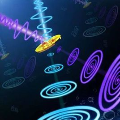Trapped ion (TI) qubits are a leading quantum computing platform. Current TI systems have less than 60 qubits, but a modular architecture known as the Quantum Charge-Coupled Device (QCCD) is a promising path to scale up devices. There is a large gap between the error rates of near-term systems ($10^{-3}$ to $10^{-4}$) and the requirements of practical applications (below $10^{-9}$). To bridge this gap, we require Quantum Error Correction (QEC) to build \emph{logical qubits} that are composed of multiple physical qubits. While logical qubits have been demonstrated on TI qubits, these demonstrations are restricted to small codes and systems. There is no clarity on how QCCD systems should be designed to implement practical-scale QEC. This paper studies how surface codes, a standard QEC scheme, can be implemented efficiently on QCCD-based systems. To examine how architectural parameters of a QCCD system can be tuned for surface codes, we develop a near-optimal topology-aware compilation method that outperforms existing QCCD compilers by an average of 3.8X in terms of logical clock speed. We use this compiler to examine how hardware trap capacity, connectivity and electrode wiring choices can be optimised for surface code implementation. In particular, we demonstrate that small traps of two ions are surprisingly ideal from both a performance-optimal and hardware-efficiency standpoint. This result runs counter to prior intuition that larger traps (20-30 ions) would be preferable, and has the potential to inform design choices for upcoming systems.
翻译:暂无翻译





